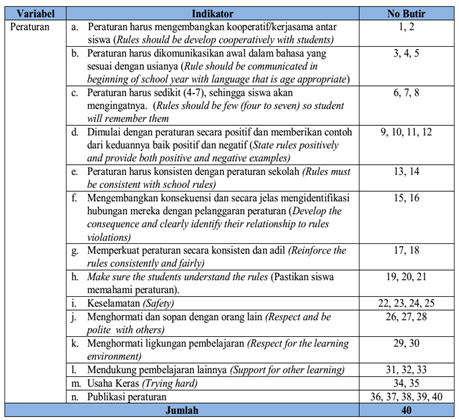Rules and Routines in Covid-19: How Are The Applications In Physical Education Learning In School?
Abstract
This study aims to determine the application of the rules (rules) and routines (routines) in the learning process of Physical Education in SMP Negeri throughout the Banyumas Regency. This research is quantitative descriptive research. The research method used was a survey method. The subjects in this study were physical education teachers in Banyumas Regency, totaling 36 schools. The sampling technique uses a total sampling technique. The research instrument used in the form of a questionnaire application of rules (rules) with a validity coefficient of 0.925 and a reliability coefficient of 0.991, as well as a routine questionnaire (routines) with a validity coefficient of 0.925 and a reliability coefficient of 0.987. Data analysis techniques using quantitative descriptive analysis presented in the form of a percentage. The results showed that: (1) The application of the rules in Physical Education learning in state junior high schools in Banyumas Regency was in the category of "very less" by 0% (0 teachers), "less" by 0% (0 teachers), "Enough" at 30.56% (11 teachers), "good" at 69.44% (25 teachers), and "very good" at 0.00% (0 teachers). (2) Implementation of routines in Physical Education learning in state junior high schools in Banyumas Regency is in the category of "very less" by 0% (0 teachers), "less" by 0% (0 teachers), "enough" by 69, 44% (25 teachers), "good" by 27.78% (10 teachers), and "very good" by 2.78% (1 teacher). With these results, it can be concluded that the application of rules and routines in SMPs throughout the Banyumas Regency is in the sufficient category.
Downloads
References
Alcock, S (2007) Playing with rules around routines: children making mealtimes meaningful and enjoyable, Early Years, 27:3, 281-293, DOI: 10.1080/09575140701594426.
Djamarah, S.B & Zain, A. (2010). Strategi belajar mengajar. Jakarta: Rineka Cipta.
Dyson, B. (2014). Quality Physical Education: A Commentary on Effective Physical Education Teaching, Research Quarterly for Exercise and Sport, 85:2, 144-152, DOI: 10.1080/02701367.2014.904155
Emi Tsuda, James Wyant, Sean M. Bulger, Eloise Elliott, Andrea R. Taliaferro, Charlene Burgeson, Howell Wechsler. (2019) Recommendations for Developing and Implementing State-level Physical Education Accountability Systems in Student Learning. Journal of Physical Education, Recreation & Dance 90:9, pages 9-15.
Ermis Kyriakides, Niki Tsangaridou, Charalambos Charalambous, Leonidas Kyriakides. (2018) Integrating generic and content-specific teaching practices in exploring teaching quality in primary physical education. European Physical Education Review 24:4, 418-448.
Festiawan, R., Nurcahyo, P. J., & Pamungkas, H. J. (2019). Pengaruh Latihan Small Sided Games Terhadap Kemampuan Long Pass pada Peserta Ekstrakurikuler Sepakbola. Media Ilmu Keolahragaan Indonesia, 9(1), 18–22. https://doi.org/https://doi.org/10.15294/miki.v9i1.20666
Festiawan, R., Ngadiman, N., Kusuma, I. J., Nurcahyo, P. J., & Kusnandar, K. (2019). Pengembangan Model Pembelajaran Pendidikan Jasmani Berbasis Games, Education, and Visualisation (GEV) Untuk Meningkatkan Pengetahuan Kesehatan Reproduksi Remaja. Jendela Olahraga, 4(2), 13-24.
Festiawan, R. (2020). Belajar Dan Pendekatan Pembelajaran. Universitas Jenderal Soedirman.
Festiawan, R. (2015). Pedagogi Olahraga (Sport Pedagogy). Universitas Negeri Yogyakarta.
Jessica, R. (2018). The 21st century classroom: Technology as a transformative tool in educational routines. Thesis. McMaster University.
Julene Ensign, Amelia Mays Woods, Pamela Hodges Kulinna, Gabriella McLoughlin. (2018) The teaching performance of first-year physical educators. Physical Education & Sport Pedagogy 23:6, 592-608.
Judith Rink. (2014) Teacher Effectiveness in Physical Education, Consensus?. Research Quarterly for Exercise and Sport 85:3, 282-286.
Kelsey McEntyre, Matthew D. Curtner-Smith, K. Andrew R. Richards. (2020) Patterns of Preservice Teacher–Student Negotiation Within the Teaching Personal and Social Responsibility Model. Journal of Teaching in Physical Education 39:2, 264-273.
K. Andrew, R. Richards, Lynn D. Housner, Thomas J. Templin. (2018) Addressing Physical Education Teacher Socialization Through Standards-based Reform of Physical Education Teacher Education. Quest 70:3, 334-353.
Lazaric, N. (2000). The role of routines, rules and habits in collective learning: Some epistemological and ontological considerations. European Journal of Economic and Social Systems, 14(2), 157–171. https://doi.org/10.1051/ejess:2000115
Locke, L. (1977) Research on Teaching Physical Education: New Hope for a Dismal Science, Quest, 28:1, 2-16, DOI: 10.1080/00336297.1977.10519895
Livingstone, M. B. E., Robson, P. J., Wallace, J. M. W., & McKinley, M. C. (2003). How active are we? Levels of routine physical activity in children and adults. Proceedings of the Nutrition Society, 62(3), 681–701. https://doi.org/10.1079/pns2003291
Maksum, A. (2012). Metodologi penelitian dalam olahraga. Surabaya: Unesa University Press.
Matthew D. Curtner‐Smith, John R. Todorovich, Simon A. Lacon & lain G. Kerr (1999) Teachers’ Rules, Routines, and Expectations Prior to and Following the Implementation of the National Curriculum for Physical Education, European Journal of Physical Education, 4:1, 17-30, DOI: 10.1080/1740898990040102
O’Sullivan, M., & Dyson, B. (2016). Rules, Routines, and Expectations of 11 High School Physical Education Teachers. Journal of Teaching in Physical Education, 13(4), 361–374. https://doi.org/10.1123/jtpe.13.4.361
Pope, C, C. (2014) Seeking connection and coherence in sport pedagogy: minding gaps and contemplating a core, Sport, Education and Society, 19:7, 959-965, DOI: 10.1080/13573322.2014.904787
Raiola, G. (2011). A study on italian primary school rules: neurophysiological and didatics aspects in phisical education and sport. Journal of Physical Education and Sport, 11(2), 43–48.
Reynaud, B. (2005). The void at the heart of rules: Routines in the context of rule-following. The case of the Paris Metro Workshop. Industrial and Corporate Change, 14(5), 847–871. https://doi.org/10.1093/icc/dth073
Rink, Judith E. (2006). Teaching physical education for learning. McGraw Hill : New York.
Saud, U.S. (2011). Pengembangan Profesi Guru. Bandung: Alfabeta.
Weichbrodt, J., & Grote, G. (2010). Rules and Routines in Organizations: A Review and Integration. Fourth International Conference on Organizational Routines, 2, 36.
Wibowo, A. (2013). Manajemen pendidikan karakter di sekolah. Yogyakarta: Pustaka Pelajar.
Wicaksono, P. N., Kusuma, I. J., Festiawan, R., & Widanita, N. (2020). Evaluasi penerapan pendekatan saintifik pada pembelajaran pendidikan jasmani materi teknik dasar passing sepak bola. Jurnal Pendidikan Jasmani Indonesia, 16(1), 41–54. https://doi.org/https://doi.org/10.21831/jpji.v16i1.29774
Williams, P. (2001). Preschool Routines, Peer Learning and Participation. Scandinavian Journal of Educational Research, 45(4), 317–339. https://doi.org/10.1080/00313830127210




